Why Coding Matters: The Tech Transforming Our World
Code is Changing Your Child's Future
You've seen the impact of coding in your own life with everyday high-tech products, like using your smartphone to shop from the comfort of your couch or your tablet to stream your favorite new television show. Or, perhaps you do all your banking online.
However, some people still think of science and coding as limited to NASA's Space missions, like the Moon landing, or even NASA's recent rover expedition to Mars, where coding and robotics were essential.
Even when we marvel at these incredible advances in technology, we also tend to take them for granted because it seems like it's all happening in the blink of an eye. But it's not. There's a lot of hard, exciting, and imaginative work going into new technology from coders all around the world, transforming fields you wouldn't normally expect — and appearing in places you might find unlikely.
We're living in the midst of a high-tech revolution, witnessing life-changing advancements in medicine, environmental conservation, and much more. At the core of all these amazing projects and discoveries is code.
We've gathered 8 innovative ways people are using computer science, AI, and robotics to impact our daily lives and influence our future in meaningful ways.
1. Ecological Conservation with Cloud Computing
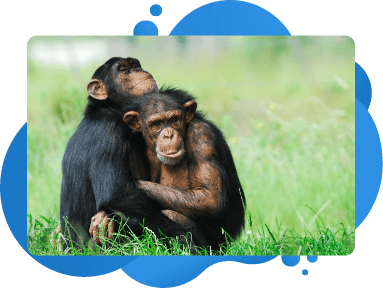
What once required a trip to the Tanzanian jungle has significantly changed thanks to coding. The Jane Goodall Institute uses remote sensing technologies to monitor and protect great apes and their habitats. Satellites, GPS, and GIS (Geographic Information Systems) map animal ranges and other natural resources — and track changes to critical habitats over time.
Of course these kinds of efforts aren't limited to chimpanzees. These same tracking, data science, and geospatial technologies give park rangers a good idea of where to build so-called “Green Corridors” for endangered wildlife to travel safely over Los Angeles highways. Technology helps humans protect our most valuable natural resources.
2. Precision Agriculture with AI and Real-time Sensors
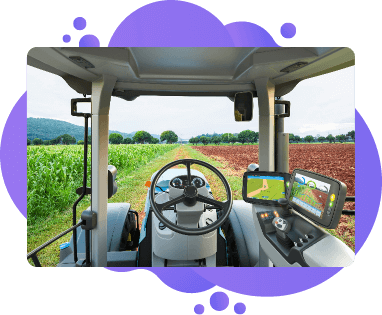
Farming has always been a data-driven field, even before computing—history's farmers relied on almanacs, measurements, and scientific inventions of all sorts. But today's technology brings new insight to bear on the problem. Farms gather so much data these days they need to employ statisticians and data scientists! For example, a field of crops can be precisely monitored using IoT sensor arrays. Plants need water? You'll know right away.
Tractors equipped with computer vision and AI can make weeding and harvesting a snap — minimizing pesticides, food waste, and other environmental impacts. Artificial intelligence even helps scientists breed new hardy strains of plants. The goal? Maximize yield and feed a hungry planet.
3. Smart Contact Lenses with Augmented Reality
You might not have been surprised the first time you saw an LED display on a refrigerator or gas pump — but how about your contact lenses? Mojo Vision is experimenting with products that add augmented reality in the form of a millimeter-scale display that fits onto a contact lens. The lens can enhance contrast, highlight edges, and even zoom — the idea is to help people with low-vision with tasks like driving and everyday life. The image processing algorithm is able to interpret real-time data on the fly, with high-precision eye-tracking sensors too. While this project is still only in the prototype phase, it might just be the replacement for eyeglasses, contact lenses, and corrective eye surgery.
Other science-driven projects help in more practical ways: The Blind Audio Tactile Mapping System (BATS) creates maps for the blind and visually impaired. The trick is transferring traditional visual information to the user's other senses. In doing so, they hope to refine and develop general tools that can communicate spatial information through sound and touch.
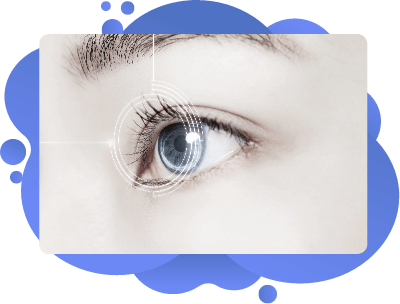
4. Big Data and the Human Genome Project
Computer vision and AI has already transformed fields like dermatology, helping doctors screen for skin cancer with uncanny accuracy. But computation and coding are changing much more than that: From diagnostic “lab on a chip” applications and other revolutionary technologies, the world of medicine is being miniaturized, automated, and infused with AI of every sort.
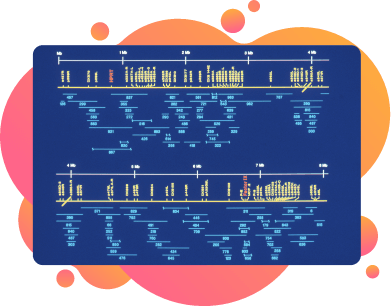
A “map” of the human genome, showing genes that have been identified. Credit: National Institute of Health (NIH)
5. AI-Created Enzyme that Breaks Down Plastics
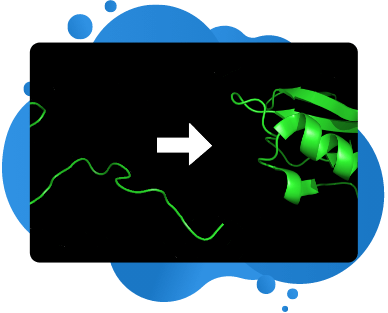
Plastic is useful because it's durable. But that durability has practical implications too: A toothbrush can take up to 100 years to decompose in a landfill. That's why scientists from the University of Texas are working on a tool that might be able to help: an enzyme that can break down plastics in just a week! By feeding the algorithm thousands of naturally occuring proteins, then mutating them deliberately, these scientists have engineered uniquely powerful enzymes!
Their AI-driven invention is only the tip of the iceberg when it comes to computer-aided discovery. Other groups like Folding@Home rely on citizen scientists' donated computing power to find surprising solutions to problems like Dengue Fever, COVID 19, Alzheimer's disease, and much more. Their therapeutics have already had a huge impact, and it wouldn't be possible without computer simulations and the collective action of thousands of volunteers donating their computing time.
6. Algorithms that Reveal Our Past
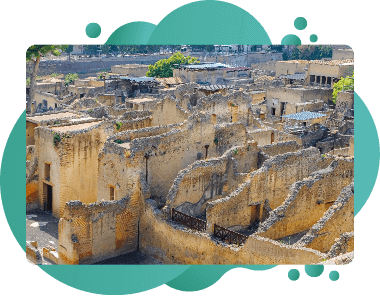
Even the liberal arts are finding applications for computer science. Ancient papyrus scrolls buried in the eruption of Mount Vesuvius have revealed their secrets after 2000 years, through careful image processing techniques. Algorithms and computerized 3D imaging have recovered these lost works of classical literature by “unfolding” the scrolls!
The age of digital humanities is just beginning: Computational analysis, natural language processing (NLP), and optical character recognition (OCR) have revealed linguistic discoveries that could never have been possible with the human mind alone.
7. Fighting Wildfires with Code
Researchers at UC Berkeley have found that machine learning and simulations can help first responders detect fires earlier and predict a fire's path, as well as quickly limit a fire. Imagery from satellites, footage from drones, and even social media posts mean that more real-time information about fires exists now than ever before, allowing data scientists to use machine learning to quickly combine, analyze, and interpret data for first responders.
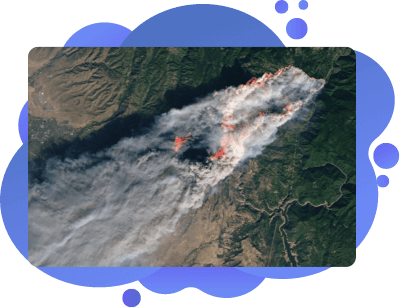
8. Black Hole Detection Using Python
Python is a beginner-friendly language your child can learn at Tynker—as well as high schools and colleges worldwide. But it's no toy: Python code was foundational for two key astronomical discoveries in recent years. NASA used Python code to reveal the first image of a black hole in their Event Horizon Telescope initiative, compositing terabytes worth of radio data with ease. More recently, this group has trained their sights on the black hole at the center of our very own galaxy, the Milky Way.
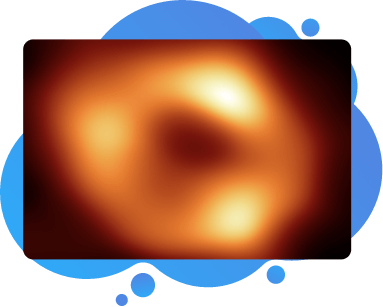
Python was used in the LIGO project's discovery of gravitational waves, too. These waves are the “ripples in spacetime” predicted by Einstein—and confirmed to exist by these scientists at CalTech and MIT. Of course, you'll find Python and other open source tools being used in science labs of every stripe, not just astronomy and physics.
Take Some Inspiration
Coding is the ultimate super power, allowing kids to solve interesting problems on their own. Even those students who don't go on to become programmers will feel the impact of computer science deeply. Equip them for the future. In a world transformed by code, what will your child's impact be?
Tynker's Advanced Coding Courses
- Data Science 1 – In this introductory course, you'll explore science, sports, politics, climate change, and much more. You'll learn how to interrogate a data set, just like a data pro, using Python, matplotlib, pandas, and more.
- Introduction to Programming and Art – Get introduced to art, design, and animation principles using Processing, a programming language designed for the visual arts community.
- Python 1 – Learn to code browser-based games using Python, pen drawing, and Turtle graphics.
- Python 2 – Learn to solve real-world problems with a fast-paced introduction to Python.
- JavaScript 1 – Learn to code fun browser-based games using JavaScript and HTML canvas. Build 11 mini-games like Snake and Pong!
- Intro to Web Development – Learn to create responsive web pages using HTML and CSS.
- Java 1 — Prepare for the Advanced Placement test and learn computer science fundamentals.